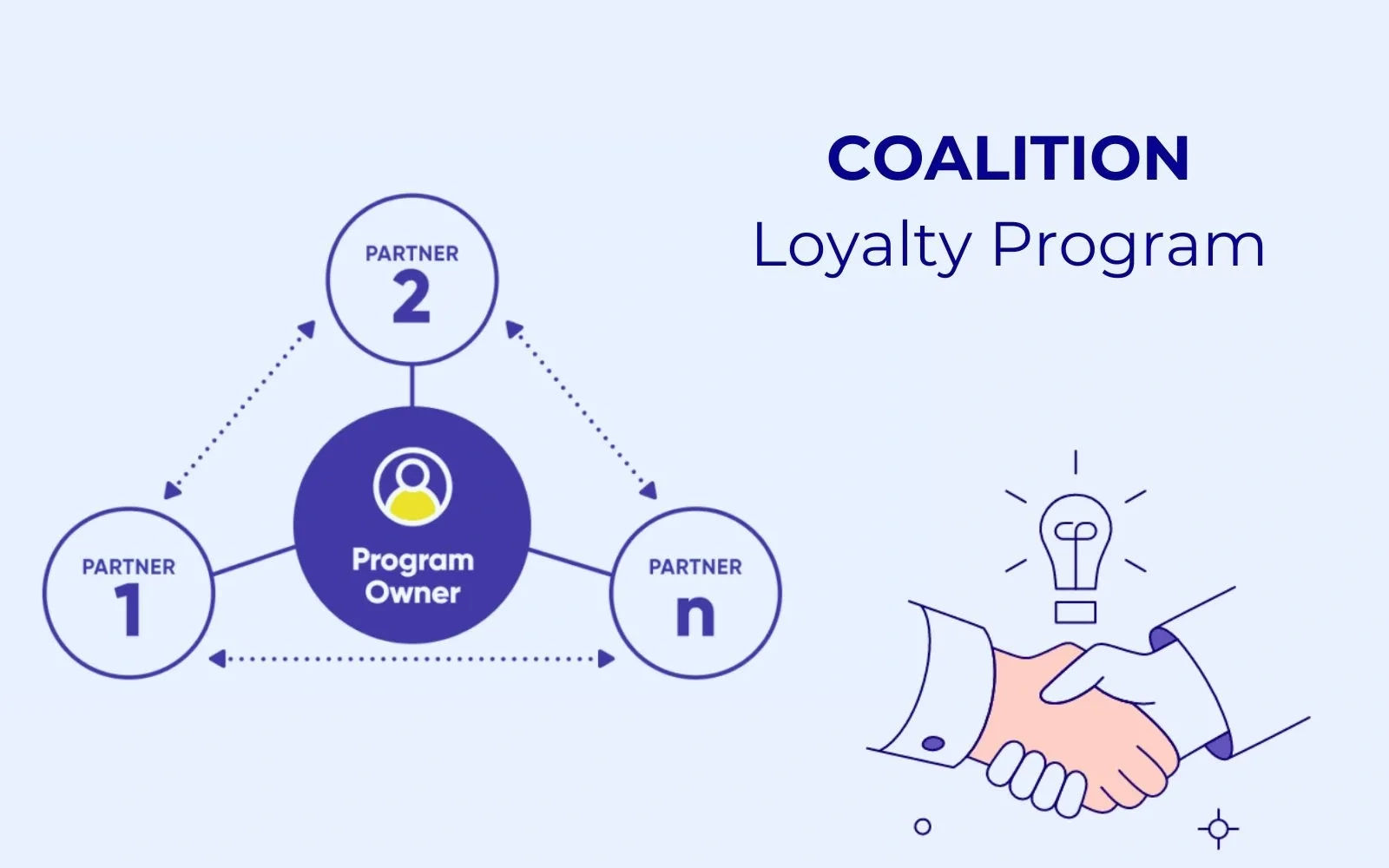10 Customer Retention Examples & Strategies to Boost Brand Loyalty In 2025
Top 10 powerful customer retention examples & strategies: 1-Starbucks, 2-Vinamilk, 3-Amazon, 4-Sephora, 5-Netflix, 6-Apple, 7-Nike, 8-Slack, 9-Chewy, 10-Spotify
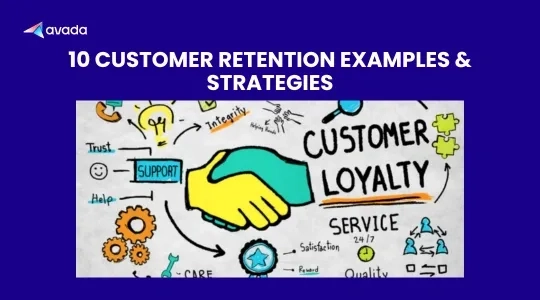
As a business owner, you understand how challenging it is to retain customers, especially in today’s competitive market. Losing customers faster than gaining them can hurt your growth. That’s why keeping your existing customers loyal is more crucial than ever.
So, how can you ensure they keep coming back? Loyal customers are your most valuable asset, as they drive repeat sales and spread positive word-of-mouth.
After extensive research and analysis, we’ve compiled a list of top 10 customer retention examples from top brands. These include loyalty programs, personalized experiences, and subscription models, building stronger customer connections.
Let’s explore these examples and uncover what makes them so effective!
Starbuck Rewards: Loyalty Rewards Program
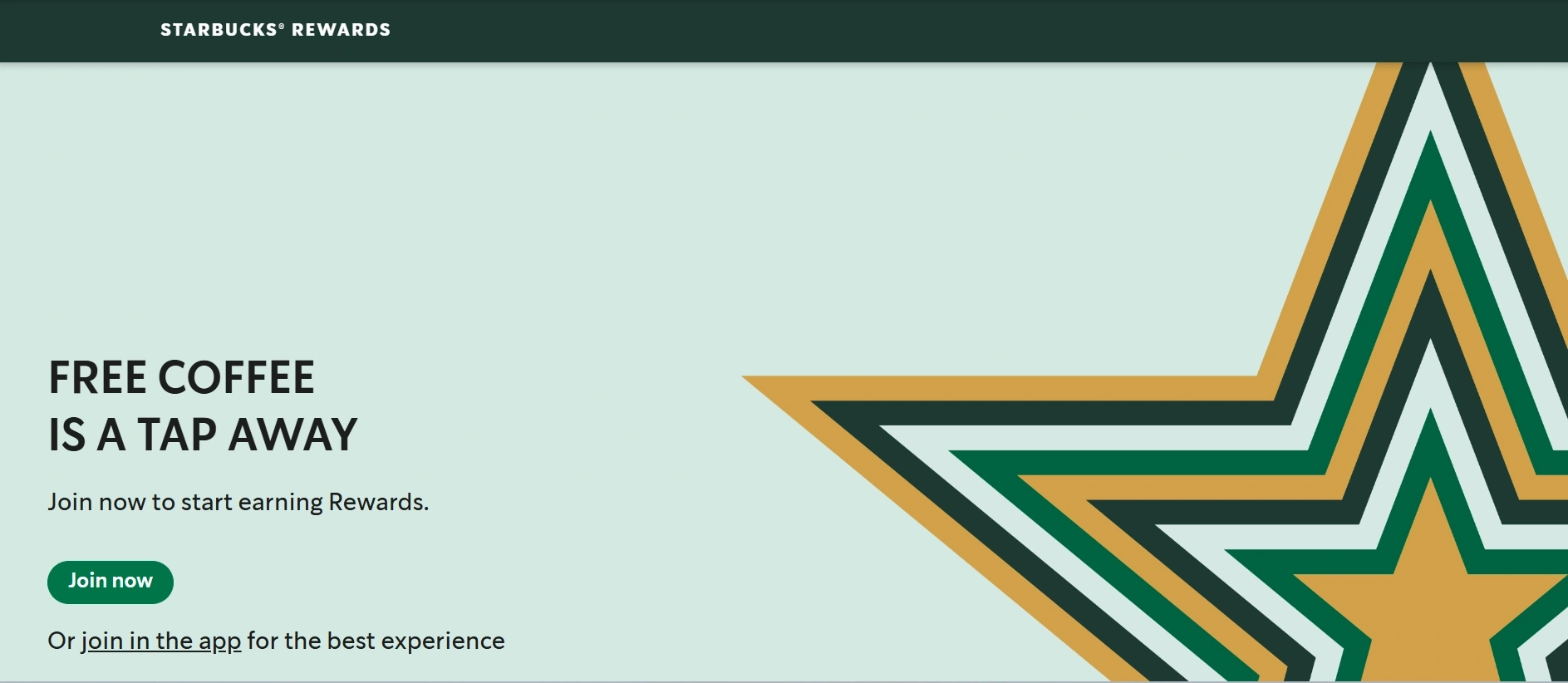
The Starbucks Rewards program is a great example of how loyalty rewards can boost customer retention. With a points-based system, customers earn “stars” for every dollar spent, which can be redeemed for free drinks, food, or exclusive benefits. This approach encourages repeat purchases and strengthens brand loyalty.
What makes Starbucks Rewards stand out is its seamless integration with the Starbucks mobile app. Customers can preload funds onto the app, order ahead, and earn stars effortlessly during transactions. The app also offers a user-friendly experience, combining convenience with personalization. Using data analytics, Starbucks tailors recommendations and sends targeted promotions to users based on their preferences and purchase history.
This program goes beyond traditional loyalty models by gamifying the experience with tiered rewards, keeping customers motivated to engage. Special bonuses, birthday treats, and seasonal promotions further enhance its appeal, making Starbucks Rewards a well-rounded and effective strategy for fostering long-term customer loyalty.
What They Achieve
- Boosted Customer Engagement: In 2022, the Starbucks Rewards program contributed 53% of the company’s total U.S. sales, underscoring its pivotal role in driving loyalty.
- Increased Spending: On average, reward members spend three times more than non-members, proving the program’s ability to maximize customer value.
- Data-Driven Marketing Success: Starbucks optimizes its marketing strategies and continuously improves customer retention by gathering customer insights through the app.
Key Lessons from Starbucks Rewards
- Emphasize Convenience: Integrating loyalty programs with mobile apps creates a user-friendly experience, ensuring high participation.
- Reward Repeat Purchases: Offering tangible rewards for continued engagement motivates customers to return regularly.
- Leverage Data for Personalization: Tailoring promotions and recommendations based on customer data enhances the overall experience, making the program feel unique and valuable.
Vinamilk: Omnichannel Integration
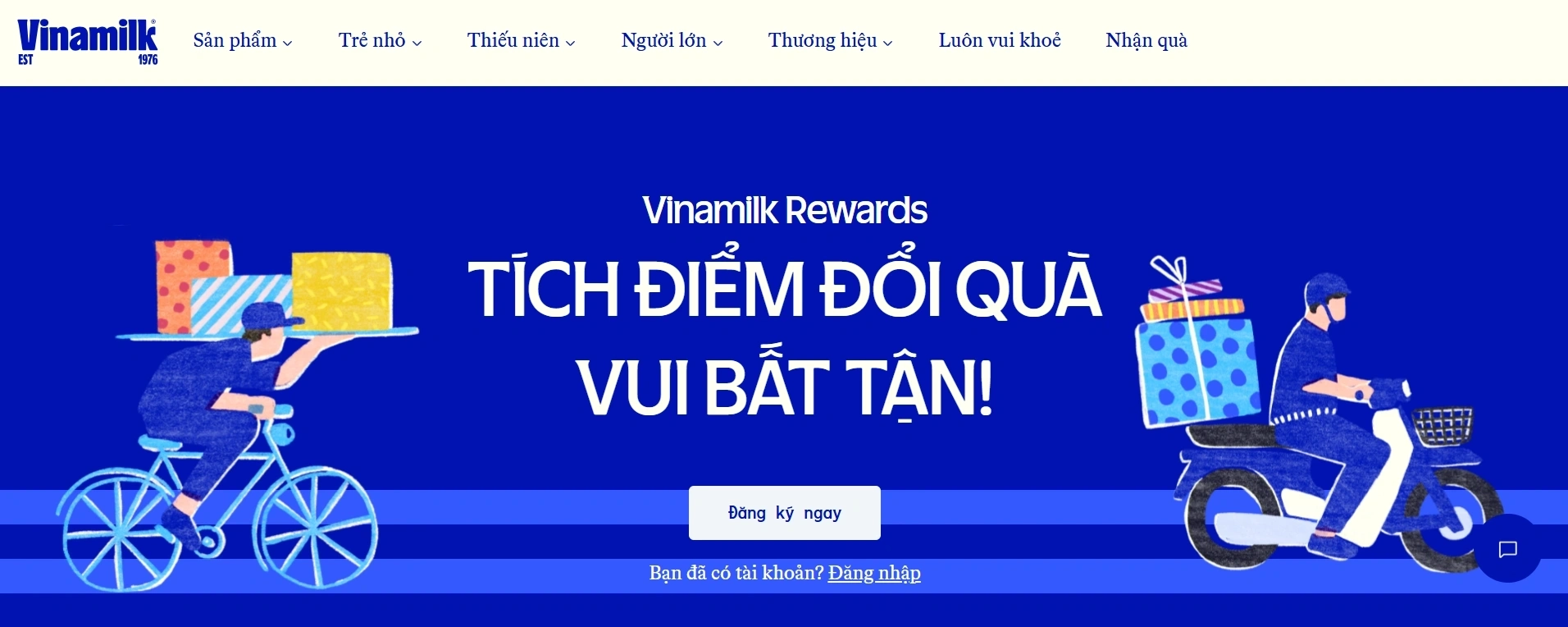
Vinamilk, Vietnam’s largest dairy brand, integrated its loyalty program across multiple channels using the Joy Loyalty Program, focusing on a unified customer experience and data management.
What They Achieve
- Unified Customer Data: Vinamilk streamlined customer data that was previously scattered across online stores and point-of-sale (POS) systems. With Joy Loyalty, they established a centralized system and connected to over 600 POS locations to manage customer information and interactions seamlessly across all channels.
- Mobile App Integration: A core element of Vinamilk’s strategy was integrating the Joy Loyalty Program into its mobile app. This allowed customers to easily track and redeem rewards, access exclusive deals, and engage directly with the brand through their smartphones.
- Flexible Reward System: The Joy program helps Vinamilk create a flexible reward system to cater to different customer segments. Customers can redeem their points for vouchers ranging from 1.18 USD to 1.97 USD, which provides value on future purchases. Moreover, the program offers exclusive Vinamilk merchandise, such as stuffed toys, milk powder, and air humidifiers.
- QR Code Scanning: The mobile app allows customers to scan QR codes from scratch cards to join the loyalty program. This seamless process connects users whether they shop in-store, online, or on marketplaces like Shopee and Lazada.
- Interactive Loyalty Page: Vinamilk launched an engaging loyalty page powered by Joy’s APIs. The page incorporates gamified features to make earning and redeeming rewards more exciting, improving the overall customer experience by adding an element of fun and interaction.
- Retail Data Integration: To address gaps in retailer data, Joy Loyalty helped Vinamilk unify customer information from various sources, providing a holistic view of customer behavior and preferences.
By combining mobile app integration, QR code functionality, and centralized data management, Vinamilk created a seamless customer experience across all channels. This approach led to impressive results: a 50% point redemption rate, a 450% return on investment, and a reach of 20 million consumers.
Key Lessons from Vinamilk
- Seamless Integration Matters: Aligning a loyalty program with existing systems ensures an efficient, frictionless experience for customers.
- Personalization Drives Retention: Targeted offers and tailored promotions foster stronger emotional connections with customers.
- Leverage Data for Growth: Using customer insights to refine offerings and strategies leads to measurable improvements in loyalty and satisfaction.
📚 Read more: Vinamilk – Joy retention | Loyalty for Shopify
Amazon: Prime Membership

Amazon Prime, launched in 2005, has evolved into a comprehensive loyalty program offering a wide array of benefits to its members. It addresses key customer pain points with free two-day shipping, eliminating high shipping costs and long delivery times. The program also goes beyond shopping by including entertainment options like Prime Video and Prime Music, which provide access to a vast library of movies, TV shows, and music. Members enjoy exclusive perks such as early access to promotions, including Prime Day sales, creating a sense of exclusivity and driving repeat purchases.
Over time, Amazon has expanded the program to include services like Prime Reading and grocery delivery through Amazon Fresh, building a comprehensive ecosystem that meets diverse customer needs. By consistently enhancing its offerings, Amazon Prime has become a model loyalty program that combines convenience, exclusivity, and value.
What They Achieve
- Increasing Increased Spending: According to CIRP’s analysis, Amazon Prime members spend $1,400 per year on Amazon’s e-commerce platform, while non-members spend around $600.
High Customer Retention Rates: Amazon Prime boasts an estimated renewal rate of 93% for customers who have subscribed for at least one year, demonstrating strong customer loyalty. - Significant Contribution to Revenue: Prime members account for approximately 64% of Amazon’s total U.S. sales, showcasing the financial impact of the loyalty program.
- Enhanced Customer Lifetime Value: Prime subscribers tend to shop more frequently and spend more than non-members, adding substantial value to Amazon’s ecosystem.
- Global Reach and Scalability: With over 200 million subscribers worldwide, Prime exemplifies how a loyalty program can scale across regions and customer demographics
Key Lessons from Amazon
- Diversify Value Propositions: Offering a variety of benefits beyond core services, such as entertainment and exclusive deals, increases the program’s appeal to a broader audience.
- Build an Ecosystem: By connecting retail, entertainment, and grocery shopping, Prime creates a “sticky” ecosystem that increases loyalty and reduces the likelihood of switching to competitors.
- Emphasize Long-Term Gains: Prime is a loss leader, focusing on customer lifetime value rather than short-term profits. This strategy cultivates deep, enduring loyalty.
- Innovate Regularly: Features like Prime Wardrobe and upcoming drone deliveries keep Prime ahead of competitors, highlighting the importance of adapting to customer needs and technological advancements.
- Personalized Customer Experience: Data-driven insights allow Amazon to offer tailored recommendations and services, enhancing customer satisfaction and engagement.
Sephora: Beauty Insider Program
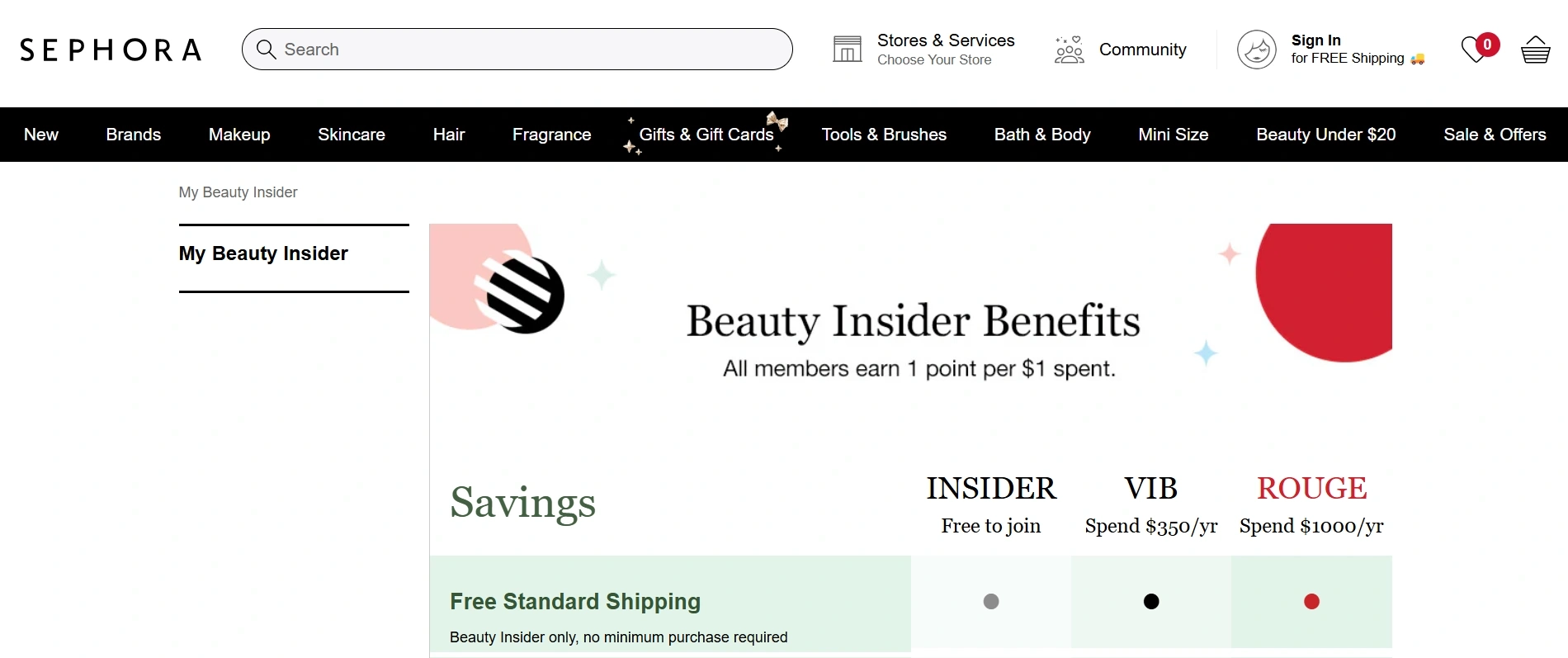
Sephora’s Beauty Insider loyalty program is a prime example of effective customer retention in the beauty industry. The program features a tiered membership structure with three levels: Beauty Insider (free to join), VIB (requiring $350 annual spending), and Rouge ($1,000 annual spending). Each tier offers progressively more significant benefits, motivating customers to spend more to unlock exclusive rewards. Members earn one point for every dollar spent, which they can redeem for rewards such as exclusive products and unique experiences, encouraging repeat purchases and brand loyalty.
Additionally, Beauty Insiders enjoy early access to special deals during Sephora’s Savings Events, with discounts and access varying by tier. Rouge members receive the most significant discounts and earliest access, creating a sense of exclusivity. To personalize the experience further, all members receive annual birthday gifts, while higher-tier members gain access to additional exclusive samples and rewards, enriching their overall experience.
What They Achieve
- High Membership Enrollment: Sephora’s Beauty Insider program boasts over 25 million members, reflecting its widespread appeal and effectiveness in attracting and retaining customers.
- High Sales Contribution: Sephora’s Beauty Insider program members account for 80% of its total sales, showing strong customer engagement.
- Personalization Success: Sephora’s use of AI for personalized product recommendations has increased customer loyalty, with tailored suggestions boosting sales by 5-15%, according to Salesforce.
- Enhanced Customer Engagement: The program’s personalized rewards and exclusive access have increased customer engagement. Members participate in free beauty classes and redeem points for unique experiences.
Key Lessons from Sephora
- Leverage Personalization: AI-driven recommendations based on customer behavior and preferences boost sales and loyalty, demonstrating the power of data-driven experiences.
- Implement Tiered Loyalty Programs: Offering multiple reward levels (Insider, VIB, Rouge) incentivizes customers, driving retention and increased spending.
- Enhance Omnichannel Experience: Consistency across apps, websites, and stores maximizes customer engagement and convenience.
- Prioritize Customer Education: Tailored content like beauty profiles and tutorials fosters informed decision-making and enhances satisfaction.
Netflix: Personalized Recommendations
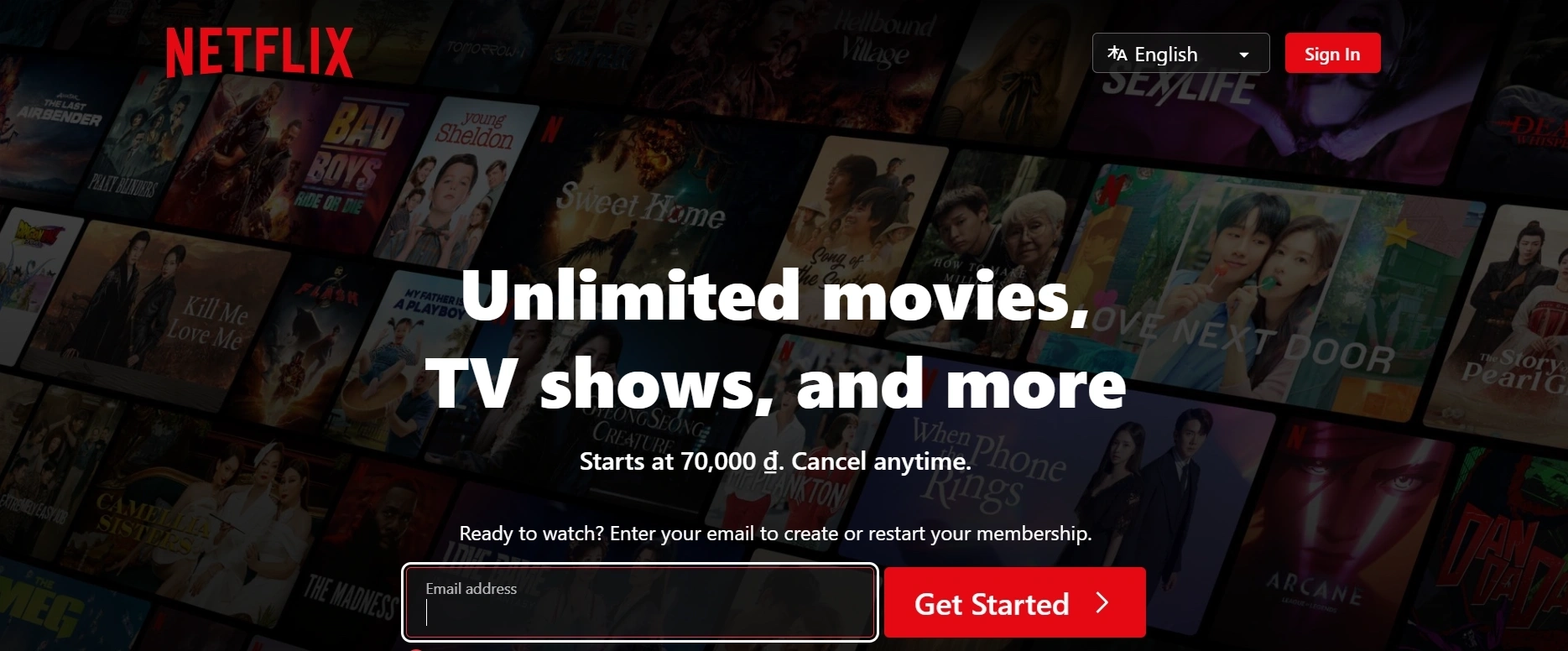
Netflix uses personalized recommendations as an innovative approach to build customer loyalty. Instead of a traditional rewards-based loyalty program, Netflix relies on its advanced recommendation engine to deliver a customized viewing experience. By analyzing user data such as watch history, ratings, and behavioral patterns, Netflix suggests movies, TV shows, and documentaries tailored to individual preferences.
This personalized approach keeps users engaged and satisfied by ensuring they always have content they’ll enjoy, reducing churn, and encouraging long-term subscriptions. Features like “Top Picks for You” and “Because You Watched” save users time and make them feel understood and valued.
By continuously refining its algorithm and introducing new features based on user feedback, Netflix has turned personalized recommendations into a powerful loyalty tool that fosters customer retention and enhances satisfaction.
What They Achieve
- High User Engagement: Personalized recommendations have driven 80% of content watched on Netflix, showcasing the platform’s success in matching viewers with content they enjoy.
- Global Retention Rates: Netflix’s user-centric features have significantly reduced churn, particularly in competitive streaming markets, strengthening long-term loyalty.
- Market Leadership: Netflix consistently delivers a seamless user experience using advanced AI, setting an industry standard and retaining its competitive edge.
Key Lessons from Netflix
- Invest in Data-Driven Personalization: Harnessing AI for tailored recommendations creates a unique value proposition, ensuring user engagement and loyalty.
- Focus on Seamless User Experience: Features like “Continue Watching” and intuitive interfaces remove friction, enhancing the overall customer journey.
- Leverage Behavioral Insights: Understanding viewing patterns allows for more effective marketing campaigns, including timely reminders and curated suggestions.
- Adapt for Scalability: Continual updates to algorithms ensure Netflix remains effective across diverse audiences and markets worldwide.
Apple: Ecosystem Integration
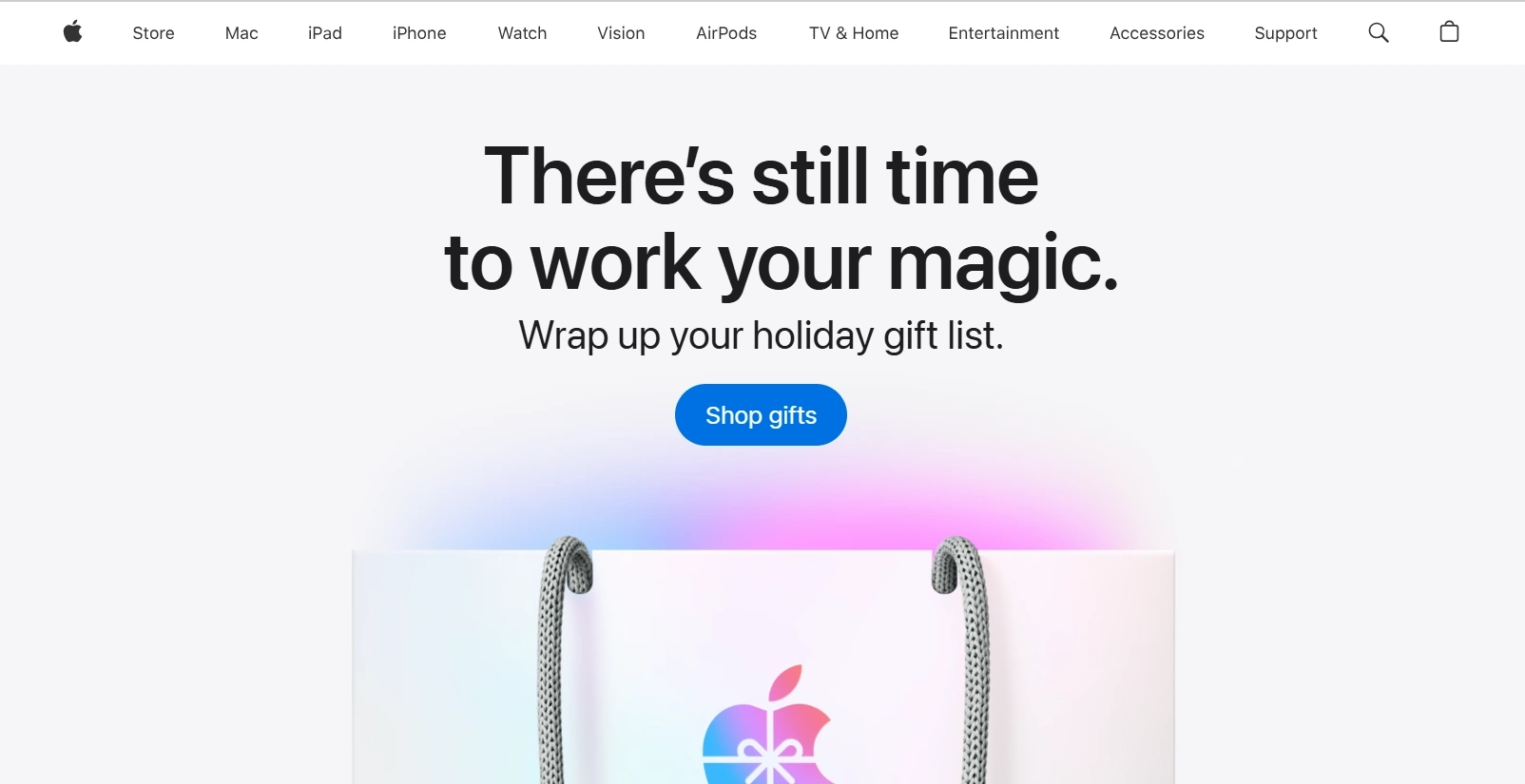
Apple is all about keeping things connected and seamless, and this is where its ecosystem truly shines. The brand doesn’t just sell devices like iPhones, iPads, Macs, or Apple Watches—it builds an interconnected web of products and services that work together effortlessly. For example, with iCloud, your photos, files, and messages sync instantly across all your Apple gadgets. Switching between devices feels natural, like picking up exactly where you left off.
What’s even more exciting is how Apple services like Apple Music, the App Store, and iCloud add extra value. They make the ecosystem more useful and create a sense of convenience and continuity that keeps customers coming back. Plus, with features like AirDrop and Handoff, Apple makes it hard to even think about leaving. Who wouldn’t love that kind of simplicity?
What They Achieve
- High Retention Rates: Apple boasts a customer retention rate of over 90% for the iPhone, thanks to its ecosystem that encourages brand loyalty.
- Revenue Growth Through Services: Apple’s services, including iCloud and Apple Music, generated over $80 billion in revenue in 2023, showing the deepening loyalty of its users.
- Seamless Device Integration: Features like AirDrop, Handoff, and shared subscriptions enhance the user experience, increasing cross-device purchases and satisfaction.
Key Lessons from Apple
- Build an Ecosystem of Value: Offer products and services that work better together, compelling customers to remain loyal to the brand.
- Leverage Compatibility to Retain Users: Seamless integration between devices and services reduces the appeal of switching to competitors.
- Focus on Convenience: Features like iCloud syncing, automatic updates, and continuity across devices streamline the user experience and ensure satisfaction.
- Monetize Through Services: Offering subscription-based services tied to hardware usage (e.g., Apple Music, iCloud) deepens customer reliance on the brand.
Nike: Mobile Loyalty Apps
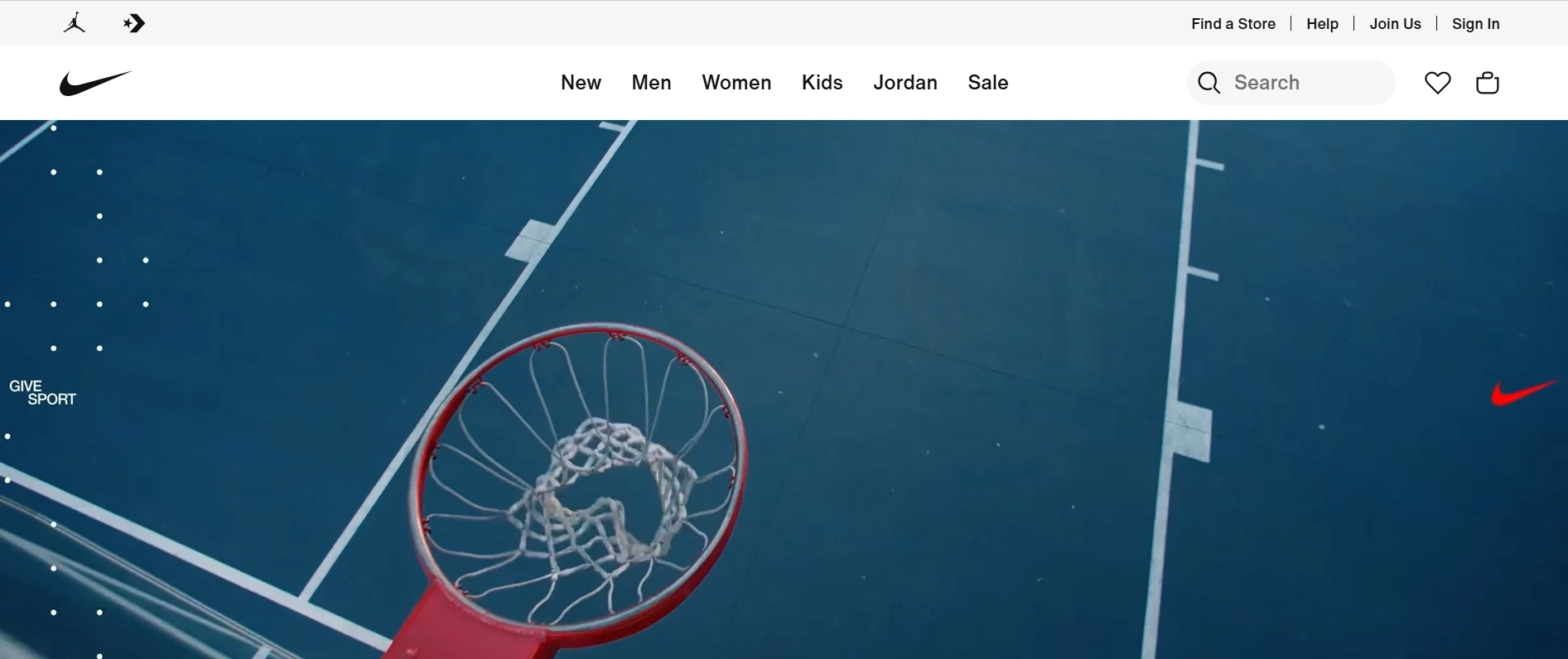
Nike’s Membership Program is a comprehensive loyalty initiative that engages customers and builds brand loyalty through exclusive benefits and personalized experiences. Members enjoy early access to new and limited-edition products, along with invitations to exclusive events, workshops, and workouts, strengthening their connection to the brand.
Through the Nike Training Club app, members receive free workout programs, expert advice, and tailored strength, mobility, and cardio exercises to support their fitness goals. Additionally, the program is seamlessly integrated across multiple platforms, including the Nike website and dedicated apps like Nike Run Club, SNKRS, and the main Nike app. This omnichannel approach ensures a consistent and engaging experience for members across all touchpoints.
What They Achieve
- Enhanced Customer Engagement: The Nike Run Club app increases participation and encourages consistent use through its interactive features and support system.
- Loyal Brand Advocates: Events and challenges nurture deeper loyalty, turning users into lifelong ambassadors.
- Global Recognition: Campaigns like “Just Do It” maintain a universal appeal, making Nike synonymous with determination and perseverance.
- Increased Sales and Customer Retention: The exclusive benefits and seamless platform integration have contributed to higher sales figures and improved customer retention rates.
Key Lessons from Nike
- Deliver Personalized and Exclusive Experiences: Providing members with tailored content and exclusive access to products and events enhances engagement and fosters a deeper connection with the brand.
- Implement Omnichannel Strategies: Ensuring a seamless and consistent experience across various platforms and touchpoints is crucial for maintaining customer satisfaction and loyalty.
- Focus on Value-Added Services: Offering services that complement customers’ lifestyles, such as training content and expert advice, can strengthen brand affinity and encourage long-term loyalty.
Slack: Freemium Model and Onboarding
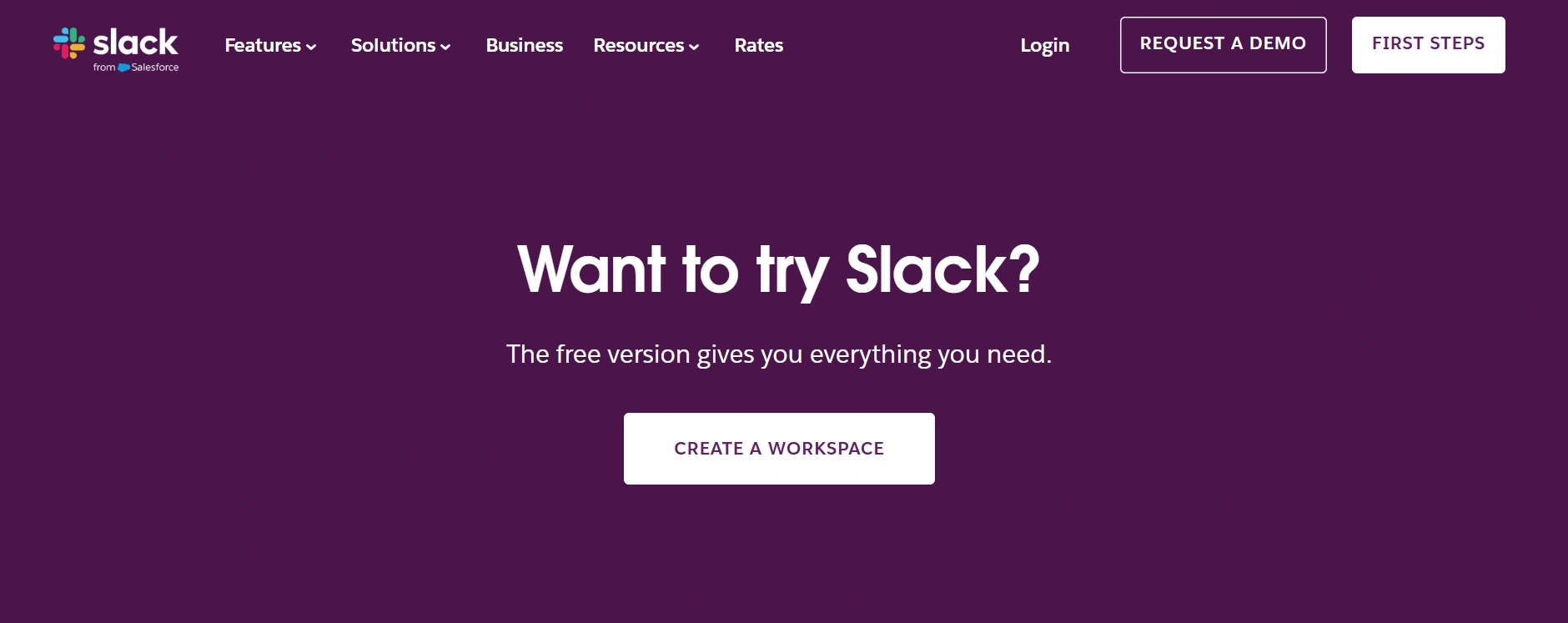
Slack’s freemium model provides an easy entry point for teams to explore its capabilities without upfront costs. With limited but sufficient features, the free tier showcases the platform’s core value. Slack’s onboarding process stands out for its simplicity, using step-by-step tutorials and prompts to guide new users toward understanding its tools. For teams needing more, paid tiers offer advanced integrations, increased storage, and enhanced features, making the transition to premium plans a natural progression.
Moreover, Slack fosters a sense of community through various initiatives. Slack Connect allows companies to collaborate with external partners, clients, and vendors, expanding the Slack ecosystem and strengthening user networks. Slack Communities are public and private groups where users with shared interests can connect, learn, and engage with each other, fostering a sense of belonging and loyalty to the platform.
What They Achieve
- Massive User Base: The freemium model attracts many users, growing Slack’s community while encouraging upgrades.
- Smooth Adoption: The user-friendly onboarding process reduces friction, making it easier for teams to integrate Slack into their workflows.
- Revenue Growth: Conversion from free to paid plans significantly boosts revenue, thanks to advanced features meeting evolving user needs.
Key Lessons from Slack
- Adopt Freemium Wisely: Offering a robust free tier demonstrates value while incentivizing paid upgrades for additional features.
- Prioritize Onboarding: Clear, intuitive tutorials and guidance enhance user experience and ensure higher adoption rates.
- Focus on Scalability: Build features that scale with user needs, making it worthwhile for teams to invest in premium options.
Chewy: Personalized Customer Support

Chewy, a leading online pet retailer, has cultivated strong customer loyalty through several strategic implementations.
- Autoship Subscription Service: Chewy’s Autoship program allows customers to schedule regular deliveries of pet supplies, ensuring convenience and consistent service. Subscribers benefit from discounts on recurring orders, enhancing value and encouraging repeat purchases.
- Exceptional Customer Service: Chewy is renowned for its personalized customer interactions, including sending handwritten notes, flowers, and custom pet portraits. This approach fosters emotional connections with customers, enhancing loyalty.
- Comprehensive Product Range and Competitive Pricing: Chewy offers a vast selection of over 65,000 products at competitive prices, meeting diverse customer needs and reinforcing its position as a one-stop shop for pet owners.
What They Achieve
- High Autoship Adoption: Approximately 75% of Chewy’s sales are generated through the Autoship program, reflecting its effectiveness in driving repeat business.
- Increased Customer Spending: Autoship customers spend, on average, $820 per year, compared to $423 spent by non-subscribers, indicating higher engagement and loyalty among subscribers.
- Strong Customer Satisfaction: Chewy’s commitment to exceptional service has resulted in high customer satisfaction and trust, contributing to its reputation as a customer-centric brand.
Key Lessons from Chewy
- Personal Touch Matters: Adding small, thoughtful gestures like handwritten notes or flowers creates memorable experiences that resonate with customers.
- Implement Subscription Models for Convenience: Offering subscription services like Autoship provides convenience, encourages repeat purchases, and increases customer lifetime value.
- Maintain a Comprehensive Product Offering: Providing a wide range of products at competitive prices meets diverse customer needs and positions the brand as a go-to resource for consumers.
Spotify: Playlists and Yearly Recaps
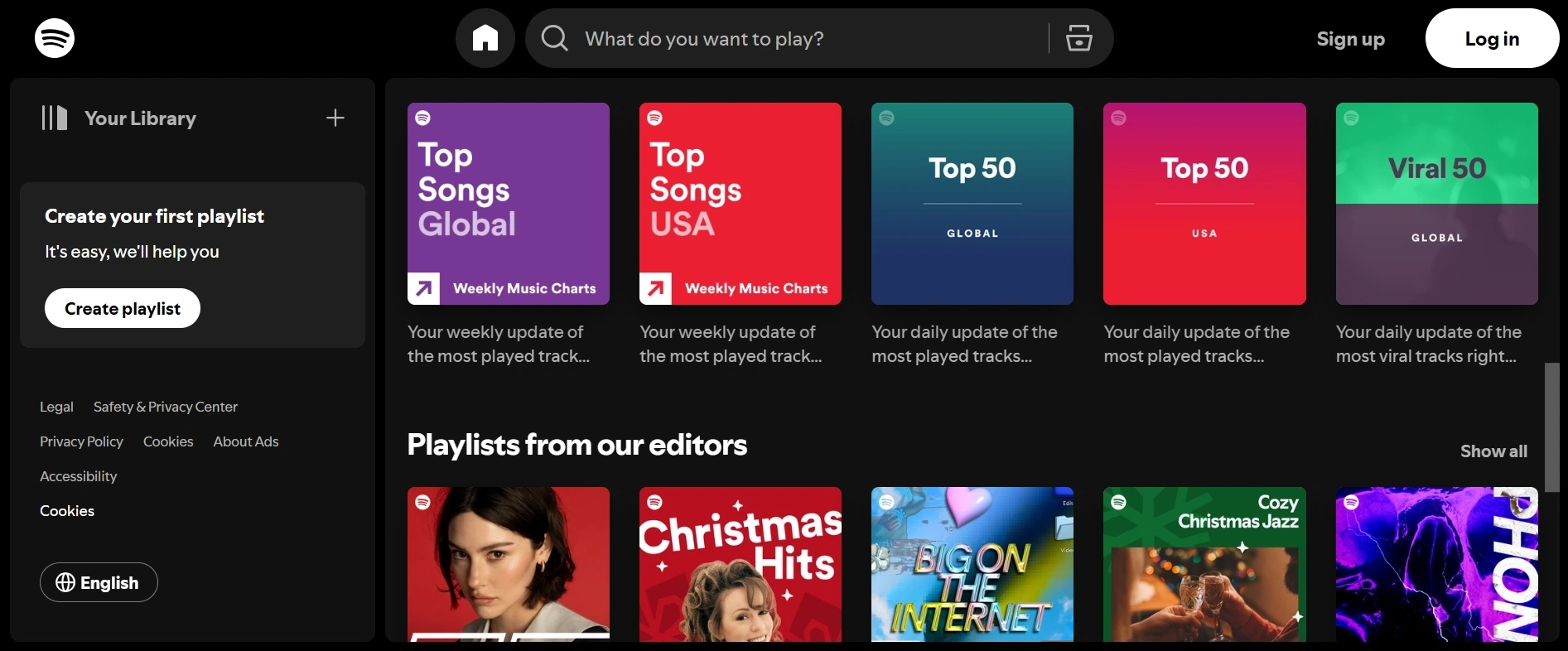
Spotify has created a highly engaging user experience through features like Discover Weekly and Wrapped. Discover Weekly uses AI to generate personalized playlists based on users’ listening habits, ensuring they stay engaged with fresh music recommendations each week. Meanwhile, Wrapped, Spotify’s annual campaign, gives users a fun and personalized review of their listening trends, including top songs, favorite artists, and overall stats.
In 2024, Spotify expanded Wrapped by introducing features like “Music Evolution” playlists and artist clips, offering deeper insights into users’ music preferences. These surprises delight users and keep them engaged with the platform throughout the year.
Moreover, Spotify’s Stars Program is a community-driven initiative recognizing and rewarding its most engaged and passionate users. Participants, known as Stars, actively contribute by assisting others, sharing feedback, and fostering discussions within the Spotify Community. In return, they receive various rewards, including free Spotify Premium subscriptions and exclusive Spotify merchandise.
What They Achieve
- Enhanced User Engagement: The program has successfully increased user participation within the community, leading to a more vibrant and supportive environment.
- Improved Customer Support: Stars play a crucial role in providing assistance to other users, enhancing the overall customer support experience.
- Strengthened Brand Loyalty: By recognizing and rewarding active contributors, Spotify fosters a deeper connection with its user base, promoting long-term loyalty.
Key Lessons from Spotify
- Leverage AI for Personalization: Spotify’s success with Discover Weekly shows the importance of using AI to create a tailored experience.
- Celebrate Milestones: Wrapped is an excellent example of celebrating milestones with users.
- Delight Through Surprises: Offering unexpected features like personalized playlists and artist messages makes the user experience enjoyable and memorable, encouraging continued interaction.
5 Customer Retention Example Ideas for Your Inspiration

Here are five powerful strategies that could transform how you keep your customers engaged and loyal:
- Loyalty and Rewards Programs: Think Starbucks and Sephora. Starbucks Rewards contributes to 40% of the company’s revenue, while Sephora’s Beauty Insider program makes up 80% of its sales. These programs don’t just offer discounts—they create lasting connections through exclusive perks that keep customers returning for more.
- Personalized Customer Experiences: Imagine this: Spotify’s Discover Weekly playlist and Netflix’s customized recommendations keep users coming back every week. Spotify reports a 40% increase in engagement thanks to tailored playlists, while Netflix’s recommendations play a key role in maintaining its impressive 75% retention rate.
- Subscription Models and Memberships: Consider Amazon Prime, with its 200+ million members worldwide, or the growth of subscription boxes. Offering exclusive deals and perks through a subscription model creates value and ensures customers stay on board year after year.
- Community Building and Engagement: Nike’s Run Club app brings runners together for events, challenges, and real-time tracking. Not only does this help build a sense of community, but it also increases brand loyalty and engagement.
- Exceptional Customer Support: Chewy goes the extra mile with personalized touches like handwritten cards and follow-ups on pet loss. These small, thoughtful gestures create strong emotional bonds with customers and transform them into lifelong fans.
Ending Words
Customer retention is about building strong, lasting connections with your audience, so customer retention examples like Amazon, Nike, and Spotify show that personalized experiences, loyalty programs, and community-building efforts drive customer loyalty. So, consider what resonates with your audience and get creative -small, thoughtful touches can make a huge difference.
Customer Retention Examples: FAQs
What is an example of customer retention?
An example of customer retention can be seen in Starbucks’ Rewards program, where customers earn points (“stars”) for every purchase. This system encourages repeat visits by offering free drinks and other rewards. Similarly, Amazon Prime boosts retention by providing exclusive benefits such as free shipping, access to Prime Video, and early deals, which create strong incentives for customers to remain loyal to the brand.
What are customer retention strategies?
Customer retention strategies focus on keeping existing customers engaged and satisfied. These strategies may include offering loyalty programs (like Sephora’s Beauty Insider), personalizing customer experiences (as seen with Netflix’s tailored recommendations), creating subscription models (e.g., Spotify’s membership), and fostering community through events or exclusive content (Nike’s Nike Run Club).
What is the customer retention rate example?
The customer retention rate is a metric that measures the percentage of customers a business retains over a specific period. For instance, Sephora’s Beauty Insider members account for 80% of the brand’s total sales, demonstrating high retention due to the loyalty program. Similarly, Amazon Prime has reported that 93% of Prime members renew their memberships annually, highlighting the effectiveness of retention-focused strategies.
How do you show customer retention?
Customer retention can be shown through repeat purchase rates, member renewals, or customer lifetime value (CLV). Tracking the frequency of repeat purchases, or the sustained engagement of Netflix users with personalized recommendations, will help quantify retention success.
Additionally, gathering customer feedback through surveys or reviewing retention-focused KPIs like churn rate can offer insights into how well a brand maintains customer loyalty.


